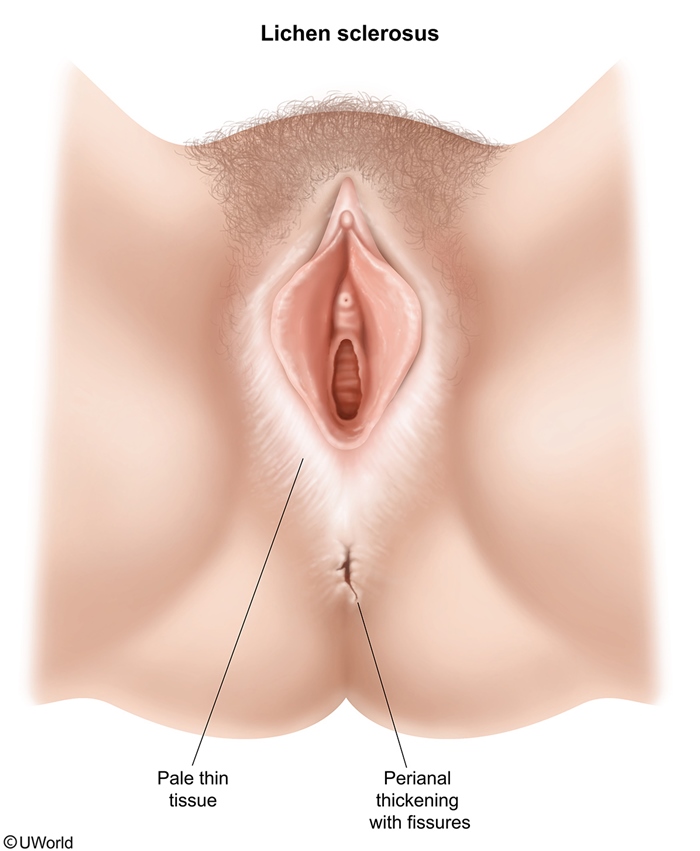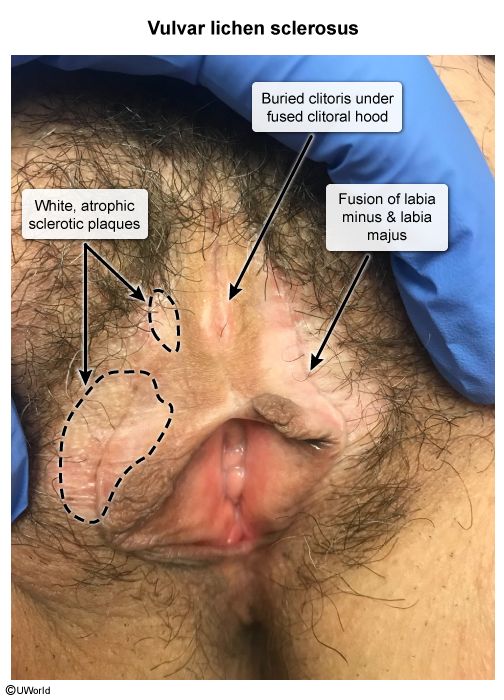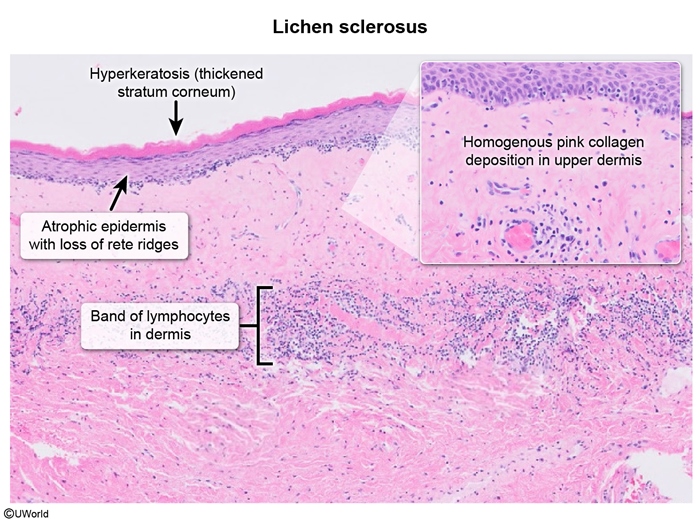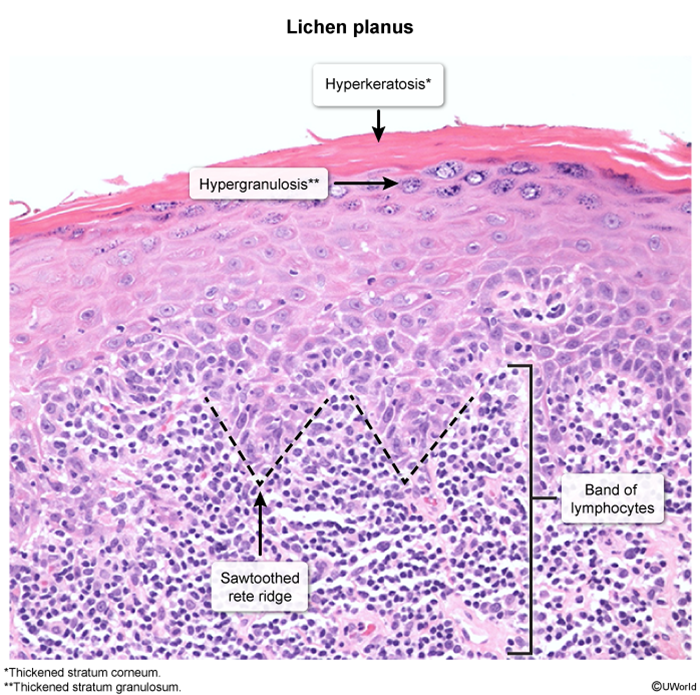Vulvar Lichen Sclerosus
Article Sections
Introduction
Vulvar lichen sclerosus is a benign but chronic and progressive inflammatory skin condition most often encountered in the anogenital region. It is characterized by significant vulvar discomfort (eg, pruritus, burning) and white, atrophic plaques that can progress to scarring and altered vulvar architecture.
Pathophysiology and risk factors
The exact pathogenesis of lichen sclerosus is multifactorial but poorly understood.
The most understood contributing factor is estrogen deficiency because lichen sclerosus most commonly occurs during periods with physiologic low-estrogen levels (eg, prepuberty, postmenopause). Additional factors, such as genetics and autoimmune mechanisms, may contribute to the development of lichen sclerosus, but the exact mechanisms are unknown. Therefore, risk factors include:
- Prepubertal or postmenopausal age (bimodal distribution due to physiologic low-estrogen levels)
- Autoimmune disorder (eg, thyroid disorders, type 1 diabetes mellitus, vitiligo)
Continue Learning with UWorld
Get the full Vulvar Lichen Sclerosus article plus rich visuals, real-world cases, and in-depth insights from medical experts, all available through the UWorld Medical Library.
Figures

Images


